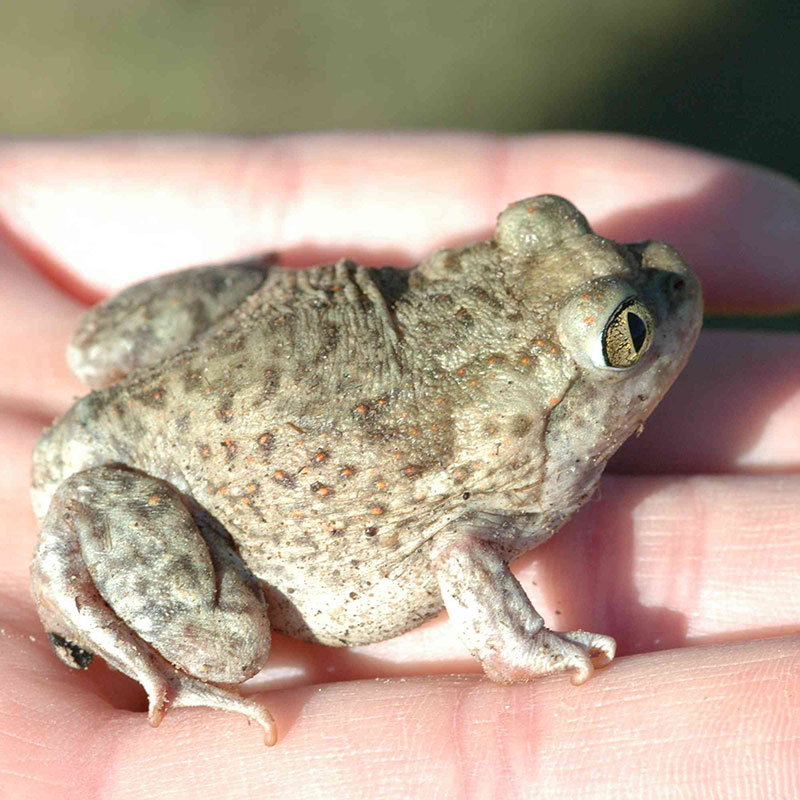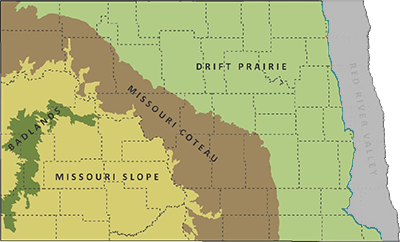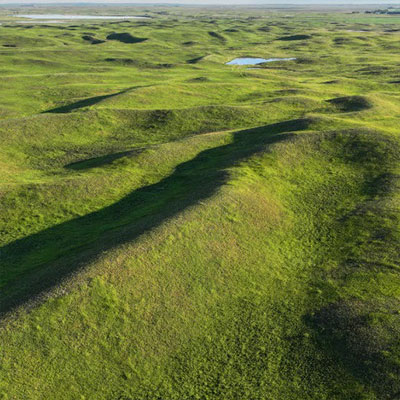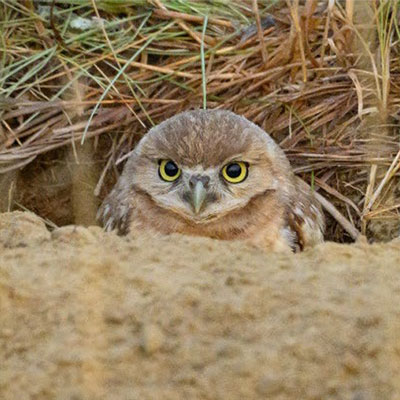Plains Spadefoot

NDGF
L 1 ½ -2”. Smooth grayish or brown skin with small red or orange tipped warts. A cat-like eye, pronounced boss between eyes, and short, rounded, wedge-shaped spade characterize this toad.
Status in North Dakota
Year-round resident.
Reason for SWAP Designation
Vulnerable throughout much of its northern range, including Montana.
Its geographic range overlaps much of the Great Plains, perhaps one of the more vulnerable ecosystems in North America.
Threats
Ephemeral wetlands in which the species naturally breed are at risk of destruction and/or degradation.
However, they may be tolerant of a broad range of habitats, even laying eggs in non-native sites such as ditches or flooded agricultural fields.
Prairie habitat fragmentation may hinder movements.
Use of pesticides and herbicides may impact populations locally.
Disease such as ranavirus and chytrid fungus may be very detrimental to amphibian populations.
Research and Monitoring
- North Dakota State has surveyed eastern ND Wildlife Management Areas for Herptiles and their habitats from 2014-2016 and 2019-2021.
- Currently no dedicated monitoring is taking place. Possible monitoring options could include the general public through an application like Herpmapper, the NDGFD incidental reporting system, or national monitoring initiatives such as PARC. Monitoring should be directed at all herptile species.
Management Recommendations
- Protect ephemeral wetland habitats from drainage or filling.
- Avoid artificially extending the naturally short hydroperiods of wetlands in arid regions of the state.
- Avoid creating permanent water sources in areas where they are naturally lacking (e.g. southwestern North Dakota In arid regions of the state, restore the natural hydroperiods of wetlands that have been altered to create permanent water sources.
- Encourage the use of alternative water sources for livestock in arid regions of the state.
- Encourage the restoration of grassland habitats that were converted to stock ponds or dugouts.




